For 10 years, the architecture publication eVolo Magazine has held an annual skyscraper competition, soliciting visionary designs that “challenge the way we understand vertical architecture.” This year’s winners created plans that are nothing short of wild. From a drone “hive” to a man-made desert oasis, the buildings look like something out of a science fiction movie.
Many are designed with social and environmental uses in mind: there are data storage centers, pollution-mitigation facilities, and living spaces meant to alleviate the challenges of urban life.
Take a look at the eye-catching skyscrapers of the future, below — including the year’s three big winners and a selection of the honorable mentions.
The first-place winner, “New York Horizon”, completely reimagines iconic Central Park. The plan proposes to dig down and reveal the bedrock below Central Park, sinking the space and wrapping the park in a 1,000-foot-tall, thin “mega structure”, a building that takes up a minimal footprint but provides maximum living space.
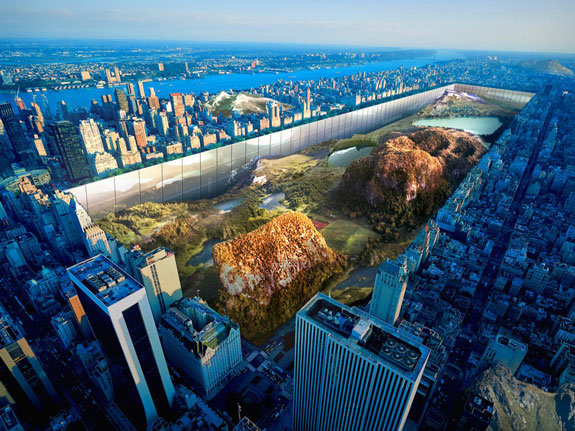
Yitan Sun, Jianshi Wu
In second place, this drone “Hive” envisions a future where a proliferation of unmanned aerial vehicles need their own version of a parking lot. Different types of docks cater to a variety of drone styles.
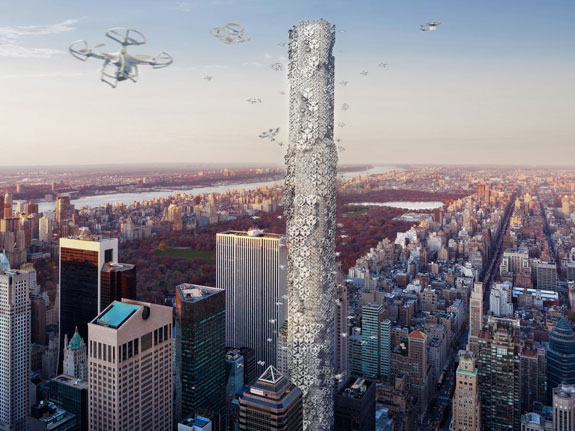
Hadeel Ayed Mohammad, Yifeng Zhao, Chengda Zhu
Here’s a “green” data storage center. Today’s data centers consume vast amounts of energy and require constant cooling. One alternative: locate the storage center somewhere cold but convenient, like Iceland. The design is meant to emulate a motherboard, and is similarly adaptable.
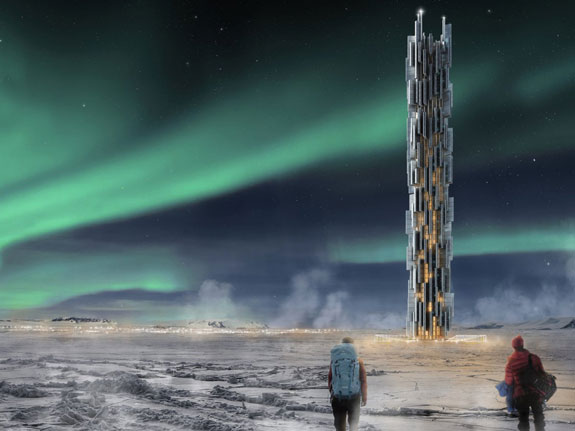
Valeria Mercuri, Marco Merletti
The “trans-pital” is a space-adaptive skyscraper hospital. The core component is the idea that the patient does not move by himself: instead, patients enter “motion tracks” and are conveyed throughout the responsive building with minimal effort.
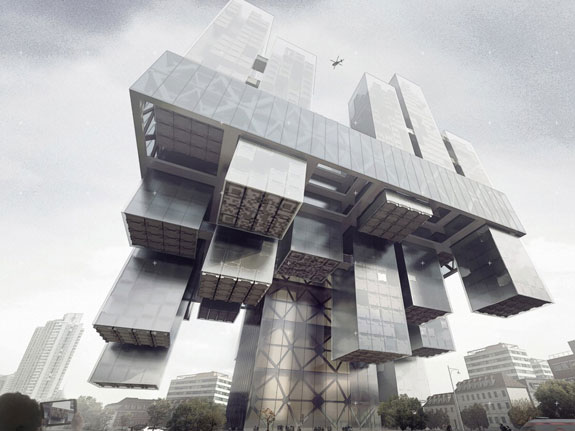
Chen Linag, Jia Tongyu, Sun Bo, Wang Qun, Zhang Kai, Choi Minhye
This wild skyscraper is meant to be thought-provoking and eye-catching, to blur the “boundary between spatial relationships” by “stunning” society.
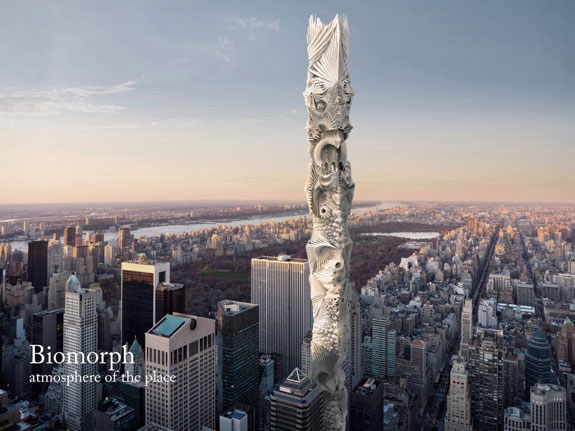
Jayong Shim, Dailong Ma, Tai Feng
The “Air-Stalagmite” is a pollution solution: it’s designed as a high-rise filter with a gigantic vacuum at the bottom, sucking polluted air in and cleaning it in a series of filters throughout.

Changsoo Park, Sizhe Chen
This “rainmaking skyscraper”, called the “Cloud Craft”, is intended to help alleviate droughts by “cloud seeding” — injecting environmentally-safe chemicals into the atmosphere to encourage cloud formation.
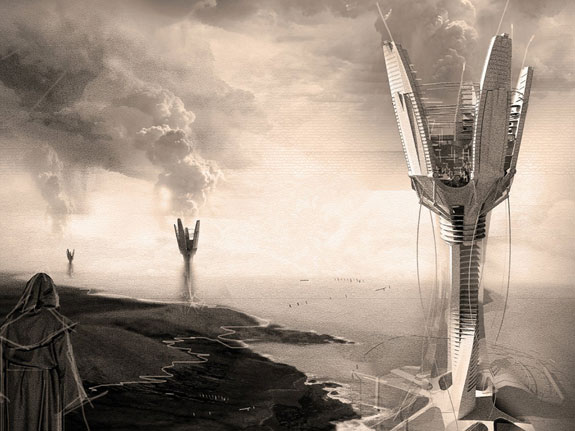
Michael Militello, Amar Shah
A “return to nature” approach to a skyscraper, this Babel tower envisions a future of resource depletion, where innovative architecture like this provides both food security and living space.
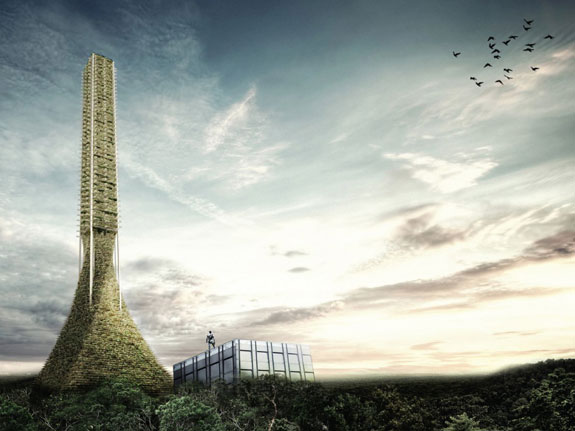
Nathakit Sae-Tan, Prapatsorn Sukkaset
Basically a giant greenhouse “skin”, the “Re-Cover” project conceptualizes a way to inject an element of sustainability into urban architecture. The skin regulates a climate-controlled interior in which agriculture can flourish on platforms scattered throughout the space.
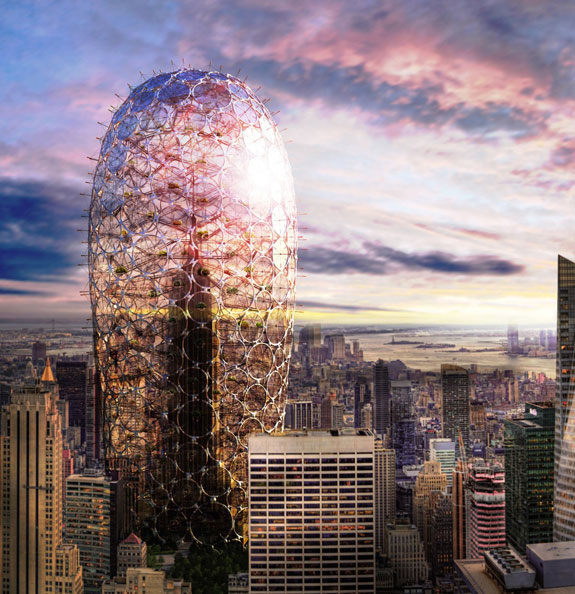
Soomin Kim, Seo-Hyun Oh
The “Valley of the Giants” complex imagines a man-made desert oasis, catalyzed by the construction of a series of thin, cylindrical towers that house plant spores, produce, collect, and treat water, and pollinate the surrounding area.
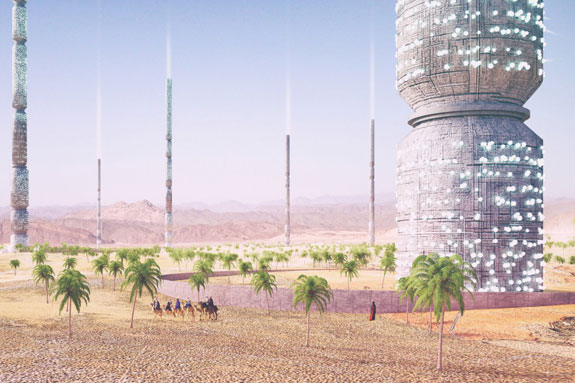
Eric Randall Morris, Galo Canizares
This epic-scale approach to solving the problem of climate change suggests a radical solution: build a massive greenhouse between the sun and the earth. It would also produce renewable energy, even as it cycles hot air away from the earth’s surface.
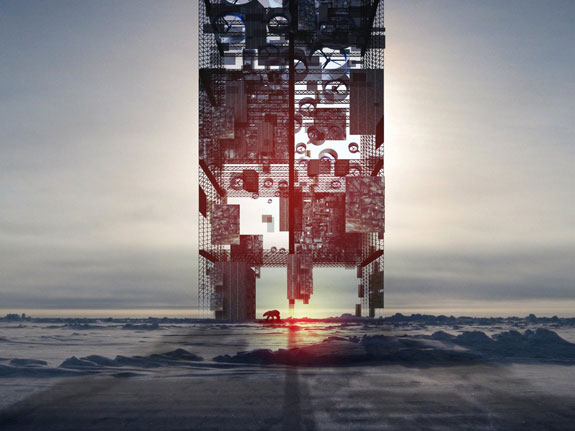
Paolo Venturella, Cosimo Scotucci
